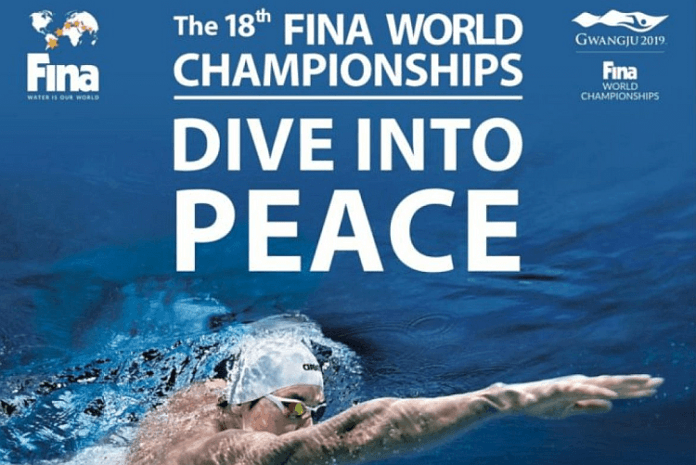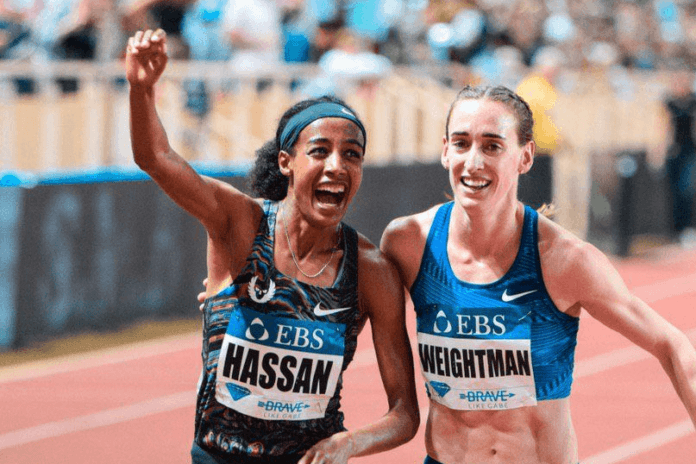Many who have watched the unchecked growth of mega-events like the Olympic Games have wondered when the tipping point will come, when someone will come along and finally reduce the size of this event – and others like it – to something that might be manageable.
Maybe it’s the athletes themselves.
Listen to Callum Skinner, a British gold and silver medalist in Rio in track cycling and the “Athlete Lead” in a new organization call Global Athlete, whose goal is to re-balance “the power” between athletes and administrators. At the recent Sports Decision Makers Summit in London (GBR), he told attendees:
“A recent study showed that 6 per cent of the money generated by the Olympics goes back towards athlete salaries. The rest is spent by the [International Olympic Committee] and athlete bodies as they see fit. In contrast, Premier League footballers pocket over half of their clubs’ revenues. Surely it is not right for athletes to have no direct share of that income.”
This is it! This is how the Olympic Games can become smaller and more manageable, and thanks to the intervention of star athletes like Skinner, thousands of others will be eliminated from the Games. Perfect!
It works like this:
(1) Skinner and his Global Athlete group tie up with the “Equal Pay” movement in women’s sport in the U.S. and over a period of months, convince the IOC – and ex-athlete President Thomas Bach (GER) – to pay prize money directly to athletes from the Games.
(2) The best prize money for individual events in a World Championship at present appears to be with the IAAF. In its 2017 championships, it offered $60,000-30,000-2,000-15,000-10,000-6,000-5,000-4,000 for the top eight places, or $150,000 per event (average $18,750 per place), with $186,000 paid for relays.
(3) The IOC awards diplomas for the top eight placers in every event, so the prize money should be for the same number of places, but – of course – the amount has to be more. Trying to forecast what Olympic prize money might be is difficult because there are so many different types of events: individuals, small teams and large teams.
Let’s take the current IOC limit of 310 events, and with eight placers per event, that’s 2,480 prize-money winners. Check out the cost with some different averages:
● 2,480 x $25,000 average per place = $ 62 million
● 2,480 x $50,000 average per place = $124 million
● 2,480 x $75,000 average per place = $186 million
● 2,480 x $100,000 average per place = $248 million
The Winter Games costs a lot less, since there were “only” 102 events in PyeongChang 2018. So the load would be 102 events times eight placers or 816 per Games at present:
● 816 x $25,000 average per place = $20.4 million
● 816 x $50,000 average per place = $40.8 million
● 816 x $75,000 average per place = $61.2 million
● 816 x $100,000 average per place = $81.6 million
So that’s $82.4 million per quadrennial on the low side and $329.6 on the high end.
(4) According to its audited financial statements, the IOC took in about $5.7 billion for the 2013-16 quadrennial. What happened to that money? The IOC’s Annual Report shows:
● $2.418 billion went to the organizing committees
● $755 million went to National Olympic Committees
● $755 million went to the International Federations
Taking into account payments in 2017 and 2018, including the PyeongChang Winter Games and the IOC paid:
● $829 million for the IOC’s 2016-18 Games expenses, including host broadcasting costs
● $532 million from U.S. TV rights and TOP program to the United States Olympic Committee
That’s $5.29 billion, not to mention $100 million to the organizers of the Youth Olympic Games, $95 million to IOC-recognized organizations like the International Paralympic Committee, Court of Arbitration for Sport and World Anti-Doping Agency, $234 million over four years for the Olympic Channel and so on, against a revenue total of a little over $6 billion.
Adding in another $82.4 to $329.6 million for prize money and the math doesn’t add up for the IOC, which is smart enough to try and keep reserves that would allow it to continue operations even if an Olympic Games or Winter Games was not held.
(5) So now what?
The obvious answer is to cut the number of athletes per event, and the number of events in the Games. Know this: once you’re playing for money, there’s much less room for the “Olympic tourists” – those athletes who attend the Games with no hope of being competitive and are just there to represent their country – since accommodating, feeding and transporting each of them reduces the total pot available for payout.
We already know, thanks to the distribution system agreed by the International Federations themselves, which of the Olympic sports are on the low end of interest, viewership and attendance. Will we say good-bye to Canoeing, Equestrian, Fencing, Handball, Hockey, Sailing, Taekwondo, Triathlon, Wrestling and Modern Pentathlon? Those are the sports on the two lowest tiers of revenue sharing today. Get rid of them and increase the prize money to those who remain, right?
Money changes everything, and it will be interesting to see how Skinner and his group approach this. Taking half of all revenues for athletes works fine for a league, which has limited rosters of a few hundred players on defined teams. It doesn’t fit so well in a world of 206 National Olympic Committees, each working in different legal systems and with varying amounts of resources and stability in their countries.
But it’s a good way to break the cycle of growth in the Games, especially with one athlete group pushing against having fewer athletes compete in the Games.
The IOC is well aware of the issue and that’s why it pushes its “Solidarity model” of revenue distribution to try and keep the entire worldwide Olympic-sport program afloat. But it is also fully aware that it has its own cards to play.
Skinner had more to say at the Sports Decision Makers Summit, including:
“The now-famous Rule 40 has further stressed athletes’ finances. In the UK, if you were selected for the Olympic Games, you cannot promote a personal sponsor in any way, including by using phrases such as ‘summer’ for a week prior, two weeks during, and a week after the Games. It varies from country to country and some are even more restrictive.”
The IOC has loosened this rule, but the restrictions are now up to each National Olympic Committee. But as the value of the IOC’s sponsorships are encroached upon, there are other options to maintain or increase that value.
Timo Lumme (FIN), the IOC’s managing director for television and marketing services, said in an earlier session at the Summit that “If you were to give total freedom to athletes, which would potentially break our model of Solidarity and our funding model, perhaps we would have to go to perimeter board advertising.”
The Olympic Games is unique for its clean-venue policy, which does not allow the layers of signs and electronic billboards which ring the playing fields at nearly every other sporting event on the planet.
Is that important to Skinner? Or would he prefer direct-deposit?
These are real issues to be resolved. Whining about how much money the IOC has solves nothing. In 2018, a German athletes group said 25% of the IOC’s revenue should go to athletes, when in fact more than that goes to make many of their sports even possible to be contested on the international level.
The Olympic Games needs to be downsized in terms of athletes and events in order for the event to remain sustainable in the long term. Skinner and his group might be able to accomplish that important goal by re-directing the IOC’s money away from growing the impact of sport worldwide and growing the rewards to those already at the top of the competitive pyramid.
Can’t wait to see the Global Athlete proposal.
Rich Perelman
Editor


























